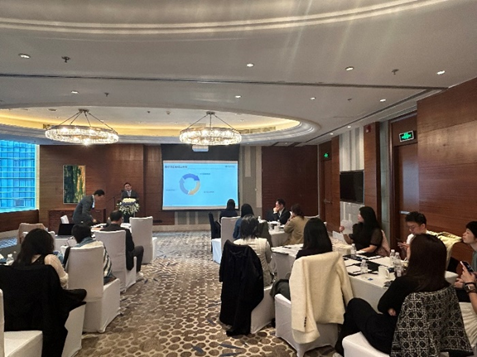On November 12, the Quality Brands Protection Committee of China Association of Enterprises with Foreign Investment (QBPC) Luxury Goods IWG, Sports, Fashion and Lifestyle IWG,and Food, Beverage and Alcohol IWG held a joint IP Salon. The participants discussed the first draft report of the research on General Standards for High-End Consumer Product Authentication as well as sharing their experience to handle spam messages and specific cases. 51 representatives from 38 QBPC member companies attended the meeting.
In his opening speech, Luxury Goods IWG Coordinator Miller Wang expressed gratitude to three IWGs’ members for their enthusiastic participation and speakers for their hard preparations. He said that the research project was financially supported by three IWGs. After the first draft report was issued, he received positive feedback from IWGs members. He looked forward to further improving the project report through the event.
Bessie Ye briefly introduced the main research target, project team and research background. After introducing in detail the research results on legality and compliance, Evie Qian elaborated on the legitimacy of identification opinions, certification efficacy and comparison with extraterritorial laws, etc. During this session, the participants and speakers had a full discussion on the qualification of appraisal subject, identification elements, identification methods, identification feasibility, identification effectiveness, and extraterritorial practice and cases, which resulted in consensus on further adjustments to the research report.
Robbie Wang then introduced the methods and experience of identifying infringers, increasing infringement compensation, and enforcing judgments from several aspects, including trademark infringement trends, case study of spam messages, enforcement cases and related cases. According to him, the sale of counterfeit goods had been gradually moving from the public domain to the private domain, which made it difficult for rights holders to identify the infringers. Rights holders must keep abreast of changes in infringement trends, try to find the infringers, and crack down on various new infringement methods. The compulsory execution required professional research, in-depth investigation and communication with the court which complement each other and are all indispensable. Procedures such as judicial detention in the enforcement process could also be flexibly applied to promote smooth execution.

